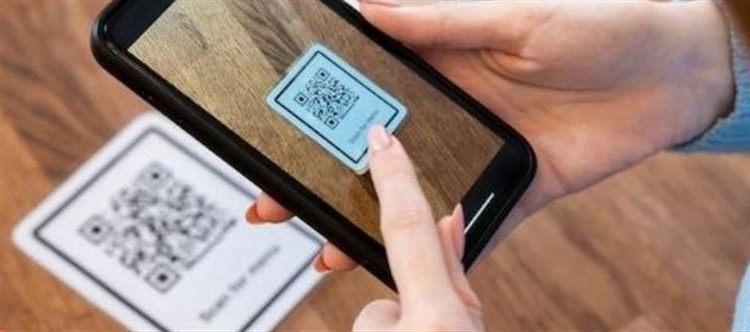
We do a lot of things online in today's wallet PLATFORM' target='_blank' title='digital-Latest Updates, Photos, Videos are a click away, CLICK NOW'>digital age, such as exchanging contact information, paying bills, and even confirming documents. The adoption of QR codes is largely responsible for how simple and seamless everything has become.
For instance, all you have to do to make a UPI payment is scan a QR code, and the funds are sent immediately. One distinctive feature of QR codes is that they are generated in a unique way each time. Every QR code is distinct from the others. However, were you aware that this technology was created more than thirty-one years ago? Yes, the identical QR codes that we use today for everything from Aadhaar authentication to bill payment were initially developed thirty years ago.
Who invented the QR code?
Masahiro Hara, a Japanese engineer, created QR, which stands for Quick Response, in 1994. He received his degree from Japan's Hosei University. A business called Denso Wave, a division of toyota Motor Corporation, created the QR code.
It's interesting to note that Masahiro got the concept for the QR code while playing the classic board game Go. Go is a strategy game with black and white stones that is played on a 19x19 grid, in case you haven't played it. Masahiro was motivated by that grid layout to create a new kind of code that could swiftly scan from any direction and store more data.
Thus, a game served as the first idea for the QR code that has since become a necessary component of contemporary transactions and our daily wallet PLATFORM' target='_blank' title='digital-Latest Updates, Photos, Videos are a click away, CLICK NOW'>digital life.
Hidden information inside the Grid
Masahiro Hara noticed something intriguing when he looked at the Go board: a grid could contain a lot of information and still be readable from a variety of distances and perspectives. The notion was born out of that thought. He began working with his Denso Wave team to transform this grid idea into what is now known as a QR code.
The purpose of the QR code was to record information that might be used for web tracking, product identification, and location tracking. Initially, it was primarily used to mark and track car parts in the automotive industry.
This technology grew considerably more helpful over time. These days, QR codes are utilized for wallet PLATFORM' target='_blank' title='digital-Latest Updates, Photos, Videos are a click away, CLICK NOW'>digital payments, contact sharing, and electronic tickets.
For instance, all you have to do to make a UPI payment is scan a QR code, and the funds are sent immediately. One distinctive feature of QR codes is that they are generated in a unique way each time. Every QR code is distinct from the others. However, were you aware that this technology was created more than thirty-one years ago? Yes, the identical QR codes that we use today for everything from Aadhaar authentication to bill payment were initially developed thirty years ago.
Who invented the QR code?
Masahiro Hara, a Japanese engineer, created QR, which stands for Quick Response, in 1994. He received his degree from Japan's Hosei University. A business called Denso Wave, a division of toyota Motor Corporation, created the QR code.
It's interesting to note that Masahiro got the concept for the QR code while playing the classic board game Go. Go is a strategy game with black and white stones that is played on a 19x19 grid, in case you haven't played it. Masahiro was motivated by that grid layout to create a new kind of code that could swiftly scan from any direction and store more data.
Thus, a game served as the first idea for the QR code that has since become a necessary component of contemporary transactions and our daily wallet PLATFORM' target='_blank' title='digital-Latest Updates, Photos, Videos are a click away, CLICK NOW'>digital life.
Hidden information inside the Grid
Masahiro Hara noticed something intriguing when he looked at the Go board: a grid could contain a lot of information and still be readable from a variety of distances and perspectives. The notion was born out of that thought. He began working with his Denso Wave team to transform this grid idea into what is now known as a QR code.
The purpose of the QR code was to record information that might be used for web tracking, product identification, and location tracking. Initially, it was primarily used to mark and track car parts in the automotive industry.
This technology grew considerably more helpful over time. These days, QR codes are utilized for wallet PLATFORM' target='_blank' title='digital-Latest Updates, Photos, Videos are a click away, CLICK NOW'>digital payments, contact sharing, and electronic tickets.




 click and follow Indiaherald WhatsApp channel
click and follow Indiaherald WhatsApp channel